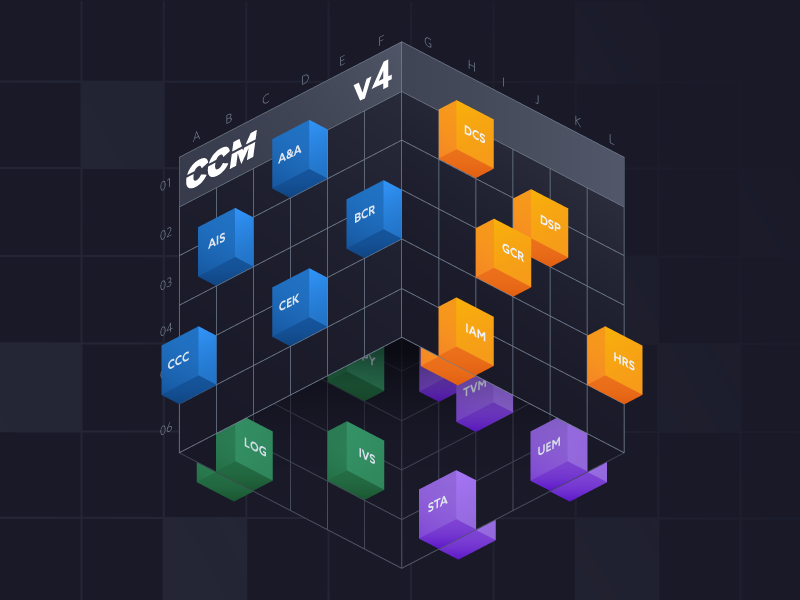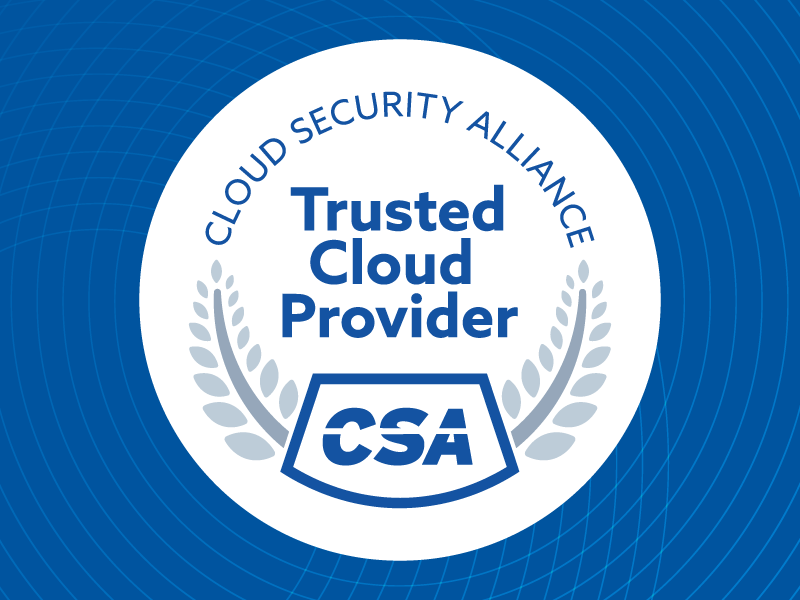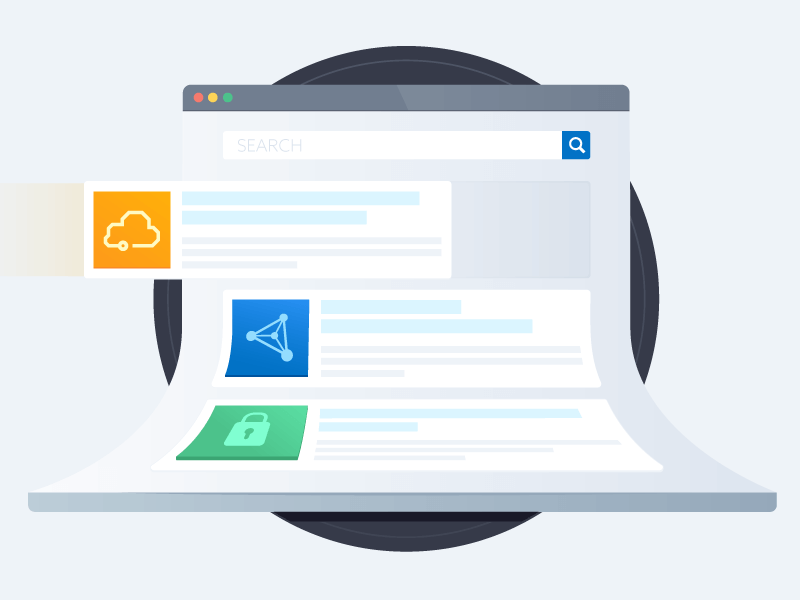Strategic Implementation of the CSA AI Controls Matrix: A CISO's Guide to Trustworthy AI Governance
Published 08/08/2025
The rapid proliferation of generative artificial intelligence (GenAI) across enterprise environments has created an unprecedented governance challenge for Chief Information Security Officers (CISOs) and GRC professionals. Traditional cybersecurity frameworks, while foundational, are insufficient to address the unique risks introduced by AI systems, including model manipulation, data poisoning, algorithmic bias, and AI supply chain vulnerabilities.
The Cloud Security Alliance's AI Controls Matrix (AICM) represents a paradigm shift in AI governance, providing the first comprehensive, vendor-agnostic framework specifically designed for trustworthy AI implementation. With 18 security domains encompassing 243 control objectives, the AICM offers CISOs a structured approach to integrate AI governance into existing GRC programs while addressing regulatory requirements from the EU AI Act, NIST AI frameworks, and other emerging global AI regulations.
This blog provides a strategic roadmap for CISOs to operationalize the AICM within their organizations, beginning with self-assessment using the Consensus Assessment Initiative Questionnaire for AI (AI-CAIQ), progressing through supply chain integration, and culminating in STAR for AI certification. Organizations implementing this framework can expect enhanced regulatory compliance, reduced AI-related operational risks, improved stakeholder trust, and competitive differentiation in the marketplace.
TL;DR:
- Immediately initiate an AI-CAIQ self-assessment to establish an AI governance baseline
- Integrate AICM controls into your third-party risk management and procurement processes
- Develop organizational readiness for STAR for AI Level 1 and Level 2 certifications
- Establish AI governance as a strategic business enabler rather than compliance overhead
The AI Governance Imperative
As Chief Technology Officer of the Cloud Security Alliance, I have witnessed the transformative impact of cloud computing on enterprise security practices over the past decade. Today, we stand at an equally critical inflection point with artificial intelligence. The deployment of GenAI technologies across enterprise environments has accelerated beyond traditional IT governance capabilities, creating gaps that expose organizations to unprecedented risks.
Industry observations and practitioner feedback consistently indicate that enterprises are starting to deploy AI systems without comprehensive security controls, and CISOs report challenges in assessing AI-related risks within their supply chains due to the lack of standardized frameworks. The regulatory landscape is evolving rapidly, with the EU AI Act establishing binding requirements for high-risk AI systems, NIST publishing comprehensive AI risk management frameworks, and regulatory bodies worldwide developing AI-specific compliance requirements.
The AICM addresses this critical gap by providing CISOs with a comprehensive, actionable framework that bridges traditional cybersecurity controls with AI-specific governance requirements. Unlike generic risk management approaches, the AICM is purpose-built for the unique challenges of AI systems, offering practical controls that can be immediately integrated into existing GRC programs.
Understanding the AICM Architecture
Comprehensive Coverage and Structure
The AICM's architecture reflects the complex, multi-layered nature of modern AI deployments. The framework's 18 security domains address the complete spectrum of AI governance challenges:
Traditional security domains enhanced for AI:
- Identity & Access Management with AI-specific privileged access controls
- Data Security & Privacy Lifecycle Management with training and inference data
- Network & Communications Security with AI service architectures
- Audit Assurance & Compliance tailored to AI regulatory requirements
AI-specific security domains:
- Model Security addressing adversarial attacks and model integrity
- AI Supply Chain Management for model and data provenance
- Transparency & Accountability for explainable AI requirements
- Human Oversight & Control mechanisms for high-risk AI systems
The Five-Pillar Analysis Framework
The AICM's multi-dimensional approach enables risk assessment and control mapping:
Control Type Classification allows organizations to distinguish between AI-specific controls, hybrid AI-cloud controls, and traditional cloud infrastructure controls. This enables targeted resource allocation and specialized expertise deployment.
Control Applicability and Ownership provides clear accountability frameworks across the AI service stack, addressing the shared responsibility models between Cloud Service Providers, Model Providers, Orchestrated Service Providers, and Application Providers.
Architectural Relevance ensures comprehensive coverage across physical, network, compute, storage, application, and data layers, preventing security gaps in complex AI deployments.
Lifecycle Relevance embeds security considerations throughout the AI system lifecycle from preparation through retirement, ensuring continuous security posture management.
Threat Category Mapping directly addresses nine critical AI threat vectors, including model manipulation, data poisoning, sensitive data disclosure, and AI supply chain attacks.
Target Audience and Stakeholder Ecosystem
Primary Audience: Chief Information Security Officers
CISOs represent the primary audience for AICM implementation due to their central role in enterprise risk management and regulatory compliance. The framework addresses specific CISO challenges:
Closing technical gaps. CISOs must guide the evolution of their cybersecurity program and extend the scope of GenAI services and technologies.
Navigating AI regulatory compliance while maintaining business enablement. The AICM's mappings to the EU AI Act, NIST AI 600-1, ISO 42001, and BSI AIC4 Catalogue provide direct compliance pathways.
Managing third-party risk, since AI services are increasingly delivered through vendor ecosystems. CISOs require standardized assessment frameworks. The AICM provides vendor-agnostic evaluation criteria for AI service providers.
Reporting to the Board and executives. The framework's structured approach enables CISOs to provide risk assessments and compliance status reporting to executive leadership and board committees.
Extended Stakeholder Ecosystem
Chief Data Officers and AI Ethics Teams benefit from the AICM's transparency and accountability controls, enabling structured approaches to algorithmic fairness and bias mitigation.
Procurement and Vendor Management Teams can leverage AICM controls as standardized evaluation criteria for AI service procurement, reducing vendor assessment complexity and ensuring consistent security baselines.
Internal Audit and Compliance Teams gain access to comprehensive auditing guidelines and assessment questionnaires specifically designed for AI systems.
Legal and Regulatory Affairs Teams can utilize AICM's regulatory mappings to ensure comprehensive compliance coverage across multiple jurisdictions.
AI Development and Engineering Teams receive clear security requirements and implementation guidelines, enabling security-by-design approaches in AI system development.
Strategic Implementation Roadmap
Step 1: Initial Self-Assessment with AI-CAIQ
Establishing the AI Governance Baseline
The Consensus Assessment Initiative Questionnaire for AI (AI-CAIQ) provides the foundation for organizational AI governance maturity assessment. This comprehensive self-evaluation tool enables CISOs to:
Conduct Comprehensive AI Inventory and Risk Assessment
Begin by cataloging all AI systems across the organization, including shadow AI implementations, third-party AI services, and embedded AI capabilities within existing applications.
The AI-CAIQ guides organizations through systematic identification of:
- AI system classifications and risk levels
- Data flows and processing activities
- Model types and deployment architectures
- Integration points with existing infrastructure
- Current security controls and gaps
Assess Current Governance Maturity
Utilize the AI-CAIQ framework to evaluate existing AI governance capabilities across all 18 AICM domains.
This assessment reveals:
- Gaps in current AI security controls
- Compliance readiness for relevant regulations
- Organizational capacity for AI risk management
- Required resource investments for comprehensive AI governance
Develop Risk-Prioritized Remediation Roadmap
The self-assessment results enable CISOs to create data-driven improvement plans, prioritizing high-risk areas and aligning remediation efforts with business objectives and regulatory timelines.
Step 2: Supply Chain and Third-Party Risk Integration
Embedding AICM in Procurement Processes
Modern AI deployments increasingly rely on complex vendor ecosystems, making supply chain security a critical governance component. CISOs must integrate AICM controls into procurement and vendor management processes:
Vendor Assessment and Due Diligence
Develop standardized vendor assessment questionnaires based on AICM control objectives.
This approach ensures consistent evaluation of AI service providers across:
- Model development and training practices
- Data handling and privacy protections
- Security controls and incident response capabilities
- Compliance with relevant AI regulations
- Transparency and explainability capabilities
Contract Language and Service Level Agreements
Incorporate AICM control requirements into vendor contracts.
Make sure to specify:
- Mandatory security controls and implementation standards
- Audit rights and compliance reporting requirements
- Incident notification and response procedures
- Data handling and retention requirements
- Model performance and bias monitoring obligations
Ongoing Vendor Monitoring
Establish continuous monitoring programs for AI vendors using the AICM framework.
Include programs for:
- Regular compliance assessments and control validation
- Performance monitoring against agreed security metrics
- Change management for vendor system updates
- Incident tracking and remediation verification
Step 3: STAR for AI Preparation and Certification
STAR for AI Level 1: Self-Assessment Certification
STAR for AI Level 1 represents the foundational certification level, validating organizational commitment to AI governance through comprehensive self-assessment.
Preparation requirements:
- Complete your AICM implementation across all applicable domains
- Establish documentation for all 243 control objectives
- Implement monitoring and measurement systems for AI governance
- Conduct an internal audit to validate control effectiveness
Certification benefits:
- Industry recognition of AI governance maturity
- Competitive differentiation in AI-conscious markets
- Foundation for higher-level STAR for AI certifications
- Enhanced stakeholder confidence in AI deployments
STAR for AI Level 2: Third-Party Certification
Level 2 certification provides independent validation of AI governance through qualified third-party assessment.
Assessment scope:
- Comprehensive evaluation of all AICM control implementations
- On-site assessment of AI systems and governance processes
- Interview-based validation of control effectiveness
- Technical testing of AI security controls
Strategic value:
- Regulatory compliance validation for high-risk AI systems
- Enhanced customer and partner confidence
- Preferred vendor status for enterprise AI procurement
- Foundation for international market expansion
Certification Roadmap
Pre-certification phase:
- Complete a gap analysis against the STAR for AI requirements
- Implement the required AICM controls and documentation
- Establish AI governance processes and procedures
- Conduct an internal readiness assessment
Level 1:
- Submit your self-assessment documentation
- Complete the CSA validation process
- Address any identified gaps or clarifications
- Receive your STAR for AI Level 1 certification
Level 2:
- Engage a qualified third-party assessor
- Prepare for on-site assessment activities
- Complete any additional control implementations
- Execute formal assessment and remediate findings
- Receive your STAR for AI Level 2 certification
Step 4: Advanced Applications and Strategic Use Cases
AI Governance Center of Excellence
Establish a dedicated AI Governance Center of Excellence using AICM as the foundational framework.
Governance structure of an AI Governance Center of Excellence:
- Cross-functional team including the CISO, CDO, and representatives from Legal and AI Engineering
- Executive sponsorship with regular board reporting
- Clear accountability and decision-making authority
- Integration with existing risk management committees
Core functions:
- Coordinate AI risk assessment and management
- Develop and enforce policies
- Develop training and awareness programs
- Support vendor management and procurement
- Monitor and report on regulatory compliance
Regulatory Compliance Automation
Leverage AICM's regulatory mappings to automate compliance reporting and monitoring.
Automated compliance dashboards should include:
- Real-time monitoring of AICM control implementation status
- Automated mapping to regulatory requirements (EU AI Act, NIST, ISO 42001)
- Exception reporting and remediation tracking
- Executive and board-level compliance summaries
Regulatory change management processes should include:
- Monitoring of evolving global AI regulations
- Impact assessments of regulatory changes on current controls
- Automated updating of compliance requirements
- Proactive implementation of emerging regulatory requirements
AI Security Operations Integration
Integrate AICM controls into Security Operations Center (SOC) activities.
SOCs should implement AI-specific monitoring, which includes:
- Model performance and drift detection
- Adversarial attack identification and response
- Data poisoning detection and mitigation
- AI supply chain integrity monitoring
Enhance SOC incident response by implementing:
- AI-specific incident response procedures
- Model forensics and integrity verification
- Stakeholder communication for AI-related incidents
- Regulatory notification processes for AI failures
Recommendations and Next Steps
Immediate Actions
- Conduct Executive Briefing: Present your AICM strategic value proposition to executive leadership and secure an implementation commitment and resource allocation from them.
- Initiate AI Inventory: Begin comprehensive cataloging of AI systems across the organization, including shadow AI and vendor-provided AI services.
- Download and Review the AICM Framework: Access the complete AICM documentation and begin familiarizing yourself with the control objectives and implementation guidelines.
- Assemble Implementation Team: Identify cross-functional team members and establish a governance structure for AICM implementation.
Short-Term Implementation
- Complete AI-CAIQ Self-Assessment: Execute a comprehensive self-assessment across all AICM domains and document the current state of the system and its gaps.
- Develop Implementation Roadmap: Create a risk-prioritized implementation plan with specific timelines, resource requirements, and success metrics.
- Begin Vendor Assessment: Initiate AICM-based assessments for critical AI vendors and update your procurement processes.
- Establish an AI Governance Framework: Implement foundational AI governance practices.
Medium-Term Objectives
- Implement Priority Controls: Execute high-priority AICM control implementations based on your risk assessment and regulatory requirements.
- Integrate with Existing GRC Programs: Fully integrate AI governance into existing GRC programs.
- Complete STAR for AI Level 1: Complete the documentation and process implementation required for STAR for AI self-assessment.
- Prepare for STAR for AI Level 2: Complete the documentation and process implementation required for a third-party audit.
- Develop AI Security Operations: Integrate AI-specific monitoring and incident response capabilities into your security operations.
Long-Term Strategic Goals
- Achieve STAR for AI Certification: Complete STAR for AI Level 2.
- Establish an AI Governance Center of Excellence: Implement comprehensive AI governance capabilities with industry-leading practices.
- Enable Business Acceleration: Leverage your AI governance framework to accelerate AI adoption and innovation while maintaining security and compliance.
- Industry Leadership: Establish your organization as an industry leader in trustworthy AI practices and contribute to industry standards development.
Conclusion
The AI Controls Matrix represents a pivotal moment in enterprise AI governance, providing CISOs with the comprehensive framework necessary to address the complex challenges of AI security and compliance. As organizations accelerate AI adoption across mission-critical business processes, the ability to demonstrate trustworthy AI practices becomes a fundamental competitive requirement.
The strategic implementation roadmap outlined in this blog provides a structured approach for CISOs to transform AI governance from a compliance burden into a business enabler. By beginning with comprehensive self-assessment, progressing through supply chain integration, and culminating in industry-recognized certification, organizations can achieve the dual objectives of robust risk management and accelerated innovation.
The window for proactive AI governance leadership is narrowing rapidly. Organizations that implement comprehensive AI governance frameworks today will establish sustainable competitive advantages in an increasingly AI-driven marketplace. The AICM provides the roadmap; the choice to lead or follow rests with organizational leadership.
I encourage CISOs to engage immediately with the AICM framework and begin the journey toward trustworthy AI governance. The future of enterprise AI depends on the governance foundations we establish today.
Written with the support of Claude and ChatGPT.
Unlock Cloud Security Insights
Subscribe to our newsletter for the latest expert trends and updates
Related Articles:
Implementing CCM: Threat & Vulnerability Management Controls
Published: 11/21/2025







.jpeg)
.jpeg)
